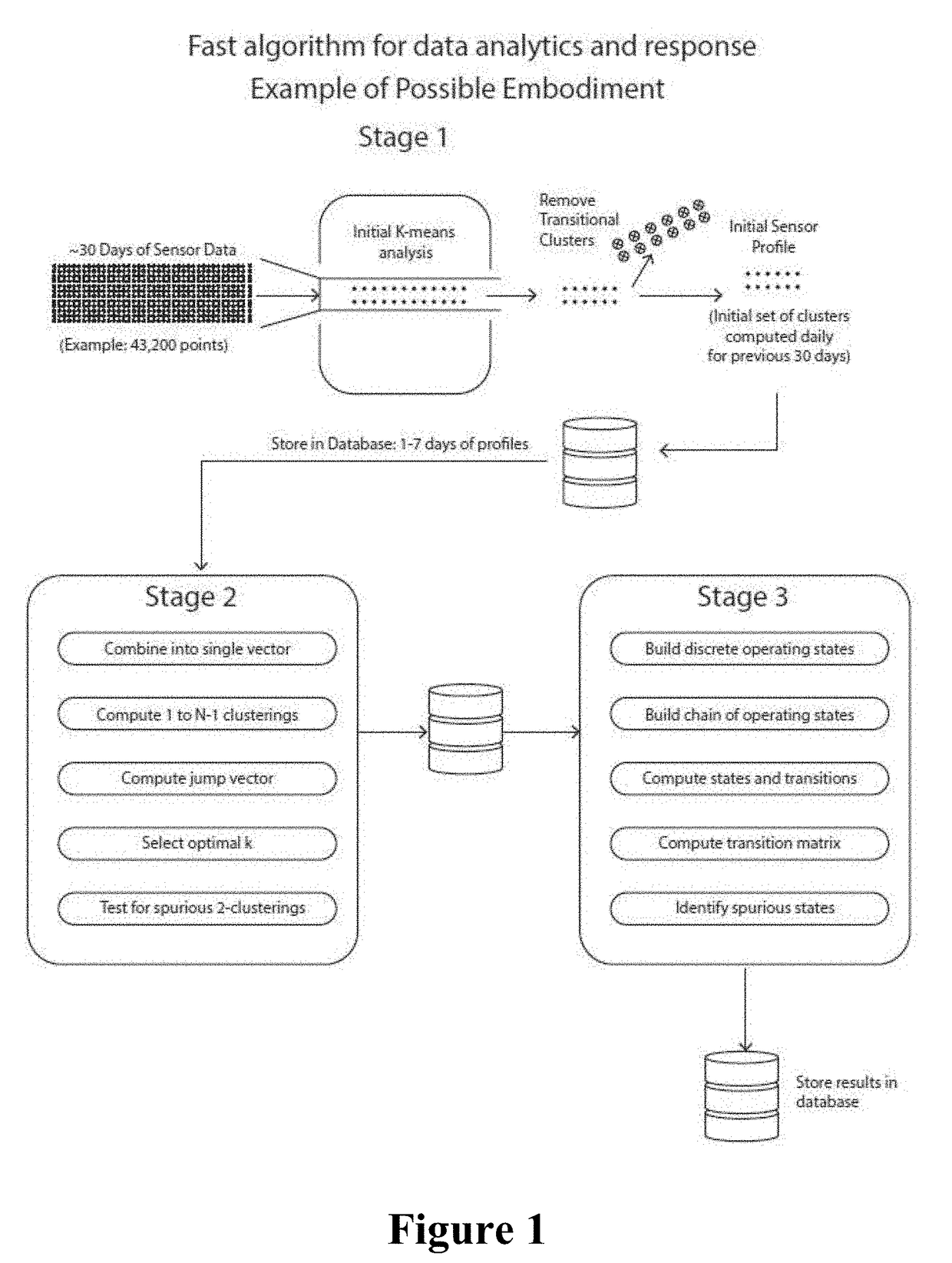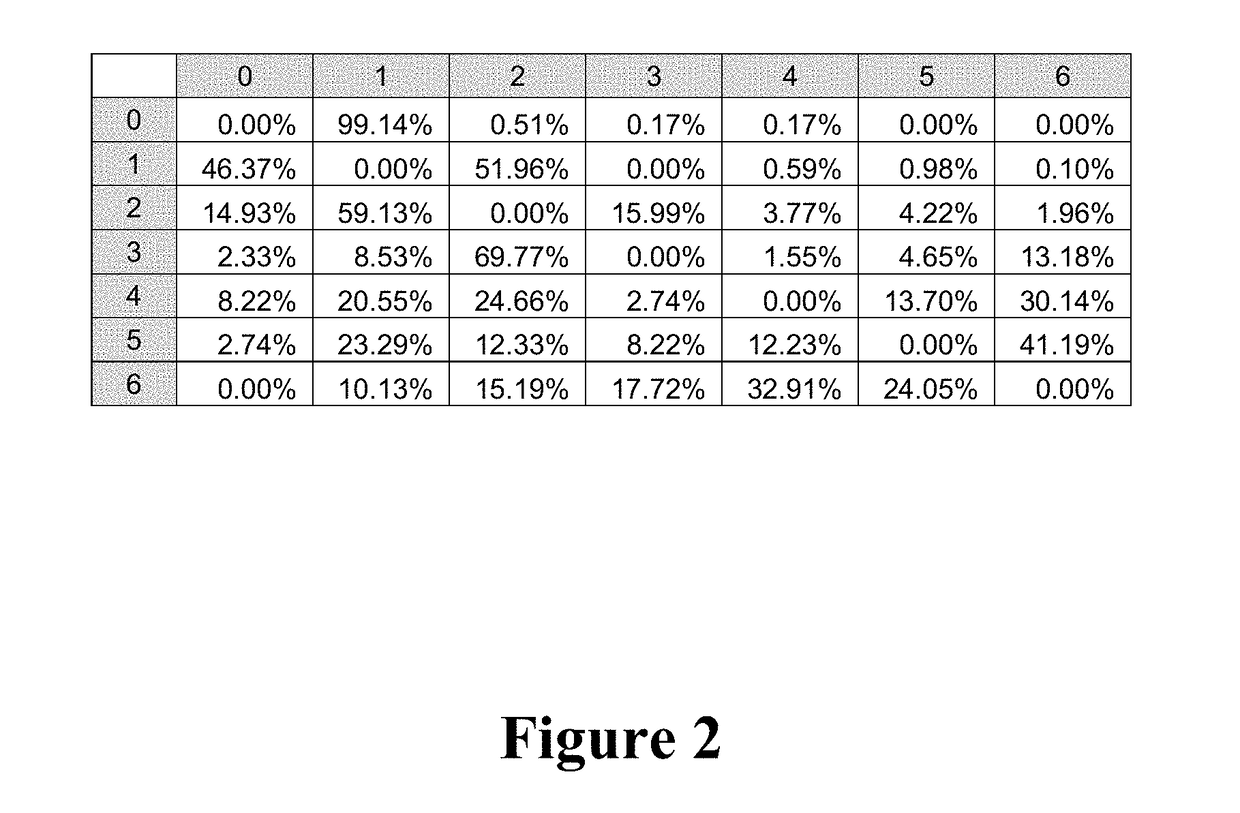Method for performing automated analysis of sensor data time series
a technology of sensor data and time series, applied in the direction of probabilistic networks, inference methods, instruments, etc., can solve the problem of nevertheless computationally expensiv
- Summary
- Abstract
- Description
- Claims
- Application Information
AI Technical Summary
Benefits of technology
Problems solved by technology
Method used
Image
Examples
Embodiment Construction
[0019]The present invention uses a fast algorithm for automated analysis of time series sensor data.
[0020]The algorithm was developed for electric circuit analysis but can easily be extended to other types of sensor data, including flow meters, temperature and weather data, air quality sensors, and so on.
[0021]In k-means clustering given a set of n data points in a d-dimensional space, the problem is to find a cluster of k points, called centroids, that minimize the mean squared distance from each data point to its nearest centroid. In practical terms, the problem is to determine clusters of observations that represent normal equipment operating states.
[0022]To analyze sensor data in terms of operating states one first needs to establish the optimal value for k; in other words, one needs to know how many operating states there are. In an arbitrary vector of sensor data the optimal number is unknown. Several heuristic optimality algorithms are known. One such method for establishing ...
PUM
 Login to View More
Login to View More Abstract
Description
Claims
Application Information
 Login to View More
Login to View More - R&D
- Intellectual Property
- Life Sciences
- Materials
- Tech Scout
- Unparalleled Data Quality
- Higher Quality Content
- 60% Fewer Hallucinations
Browse by: Latest US Patents, China's latest patents, Technical Efficacy Thesaurus, Application Domain, Technology Topic, Popular Technical Reports.
© 2025 PatSnap. All rights reserved.Legal|Privacy policy|Modern Slavery Act Transparency Statement|Sitemap|About US| Contact US: help@patsnap.com



